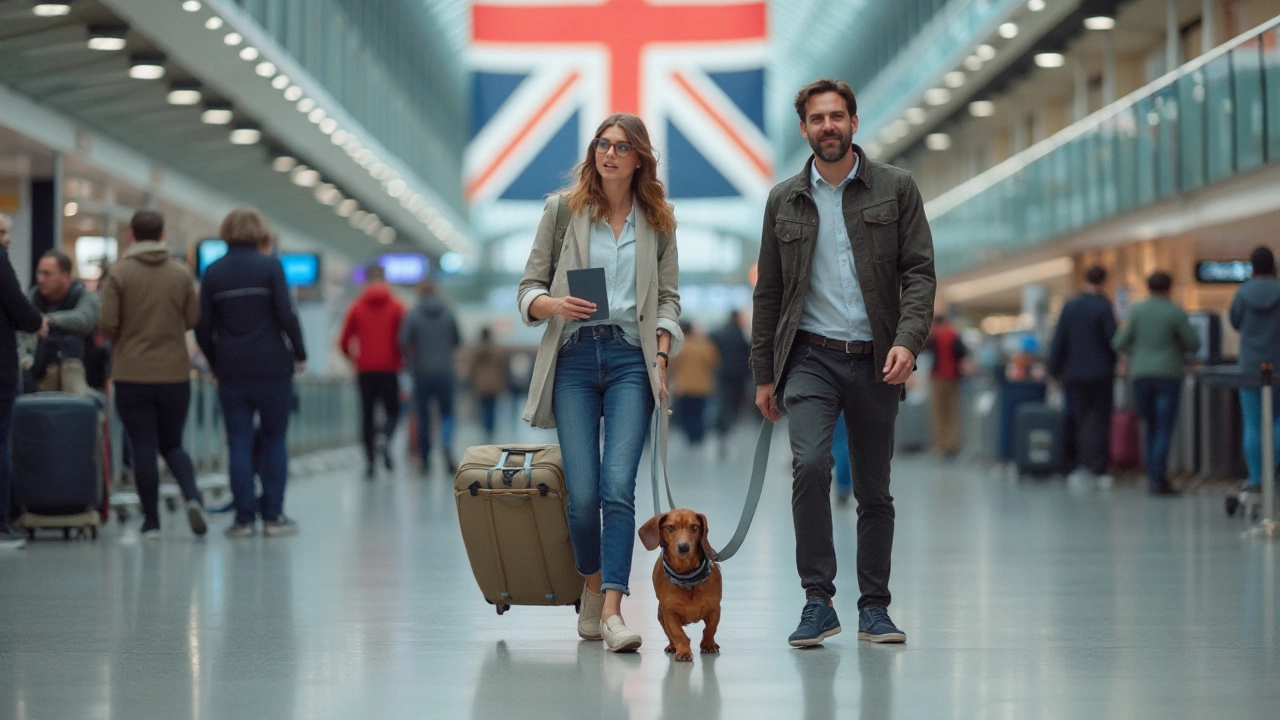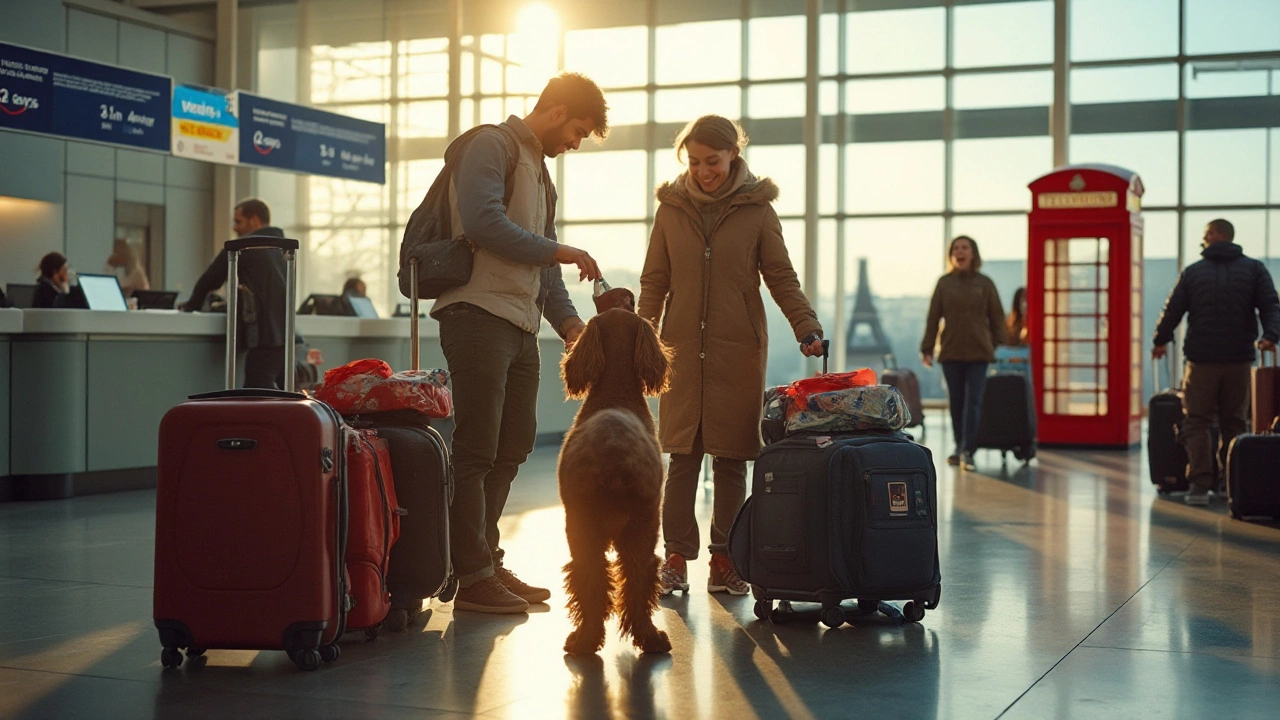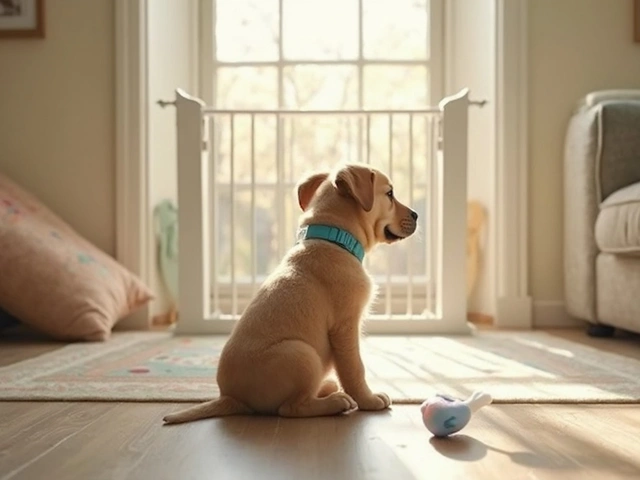Traveling with your beloved pet can feel like coordinating a small adventure. It's one thing to plan your travel, but adding a pet into the mix calls for an additional layer of preparation. Not all airlines are pet-friendly, and knowing this upfront can save you from potential travel disruptions.
Some carriers have restrictions or simply do not accommodate pets, citing reasons such as safety and comfort. However, don't be discouraged. Plenty of options and alternatives exist to ensure your furry companion can join you on your journey smoothly.
Whether you're a seasoned traveler or planning your first trip with your pet, understanding the policies of various airlines can make a world of difference. With the right information, your pet's comfort and safety can be secured, ensuring your journey is as enjoyable for them as it is for you.
- Current Airlines Prohibiting Pets
- Alternatives for Pet Owners
- Tips for Flying with Pets
- Understanding Airline Pet Policies
- Preparing Pets for Air Travel
Current Airlines Prohibiting Pets
When planning a trip, pet owners must navigate the sometimes tricky landscape of airline policies, especially those concerning pets. While many airlines offer pet-friendly options, allowing passengers to bring their furry companions in-cabin or as checked luggage, others have policies that prohibit pet travel entirely. Understanding these rules before booking can save time, money, and stress.
Several airlines, typically low-cost carriers, opt not to allow pets aboard their flights at all. Ryanair, for example, has a strict no-pets policy across its entire network, except for guide dogs. The airline cites cabin space limitations and additional weight as reasons for this policy. Similarly, Asian budget carriers like AirAsia and FlyScoot also do not permit any pets onboard, which might surprise travelers planning regional trips with their pets.
Some airlines focus heavily on passenger comfort and safety, making the decision to prohibit pets based on maintaining a peaceful cabin environment. Yet, these policies can be perplexing and even inconvenient for travelers who consider their pets part of the family. It's vital to keep in mind that these restrictions aren’t arbitrary; they often stem from operational priorities and safety concerns that vary widely depending on geographic areas and airline size.
An airline representative once mentioned, "We strive to provide the best experience possible for all passengers. Sometimes, this means creating a pet-free environment to accommodate those with allergies or phobias." This philosophy influences policies to maintain harmony among all customers.
The landscape of pet travel is ever-changing. Some airlines currently prohibiting pets might revise their policies in the future in response to increased demand or evolving public sentiment. For instance, in the lead up to 2020, there was a significant push among carriers to improve their pet travel facilities, which led to many revisiting their policies, sparking hope that past rules might be modified.
| Airline | Region | Pet Policy |
|---|---|---|
| Ryanair | Europe | No pets allowed, except guide dogs |
| AirAsia | Asia | No pets allowed, only service animals |
| FlyScoot | Asia | No pets allowed, restricted to service animals |
Determining which airlines do not permit pets and why helps travelers make informed choices. While restrictions may feel limiting, there's a growing market of options available that cater specifically to pet lovers. Engaging with the right sources of information provides the best chance for a seamless journey with your pet, helping you avoid last-minute surprises at the check-in counter.
Alternatives for Pet Owners
Traveling with pets can sometimes feel like an intricate puzzle, especially when certain airlines don't accommodate our furry friends. But fret not, there are numerous alternative methods to consider that can assure both you and your pet remain comfortable and safe while traversing the skies. One of the simplest substitutions is exploring routes through pet-friendly airlines. These airlines, unlike their strict counterparts, provide various options tailored for pet travel, from allowing small pets in the cabin to offering special cargo services for larger animals.
Another plausible alternative is the option of pet transport services, which have become remarkably sophisticated. Companies dedicated to this line of work ensure that pets travel in a stress-free, controlled environment, often with the supervision of trained professionals. This can be particularly beneficial when moving large dogs or exotic pets not typically accommodated by commercial airlines. These services also provide detailed tracking options, so owners can monitor their pet's journey in real-time.
For those who prefer a more hands-on approach to traveling overland, renting a pet-friendly RV or car could be an exciting adventure. Not only does it give control over pit stops and accommodations, but it can also be a less stressful experience for pets as they acclimate to a familiar environment. Make sure to plan your route to include pet-friendly accommodations and rest areas where you and your pet can stretch out and refresh.
Animal-sitting services or boarding facilities come as a last resort, offering safe lodgings for pets while their owners travel. While this might not provide the opportunity for your pet to experience travel alongside you, it guarantees their safety and well-being. Choosing a facility that employs knowledgeable staff and offers enriching activities can offer peace of mind that your pet is in good hands. As an additional tip, always check reviews and feedback for these services to ensure their reliability.
In recent years, more creative alternatives have appeared, such as "buddy flights," where a trusted friend or service provider accompanies your pet on a flight as a companion. While this could entail an added cost, it might be worth considering if it ensures your pet receives the same attention and care as if you were traveling together. This option becomes particularly useful when faced with unavoidable travel obligations. Consult with a service provider to understand how these buddy systems operate, often involving the surrogate traveler purchasing a return ticket.
To provide a complete picture, here's a look at some popular pet transport company options and their services:
| Company | Service Type | Tracking |
|---|---|---|
| PetRelocator | Global travel including quarantine arrangements | Yes |
| Airpets International | Domestic and international | Yes |
| Happy Tails Travel, Inc. | Ground and air transport | No |
With creative alternatives and the evolving world of pet travel, taking your pet on your next adventure has never been easier. Explore options, consider the comfort and safety of your pet, and enjoy the journey.

Tips for Flying with Pets
Flying with your pet can be a rewarding experience, but it requires detailed planning and preparation. First things first, make sure to check the airline's pet policy because each airline has its own set of rules and regulations. Knowing these details is crucial, especially since some carriers do not allow pets at all. For those that do, there might be specific requirements regarding the pet carrier's size, type, and the pet's health documents.
Booking your flight early, if a pet is traveling with you, is another critical step. Many airlines have a limited number of slots for pet travel, and these get booked quickly. Once you have your spots secured, make sure your pet is comfortable with its carrier. It's a good idea to let them wander in and out of it at home before your trip, so it becomes a familiar space. This could help alleviate any anxiety your pet might feel during travel.
Next, a visit to the vet is essential before your journey. Not only will you get any necessary vaccinations or health certificates, but your vet can also provide guidance regarding any sedatives or medications if needed. This will ensure your pet is ready for travel and meets all the airline pet policy requirements. Speaking of carriers, ensure that yours is both airline-approved and comfortable for your pet to stand, turn, and lie down in.
Consideration of your pet's feeding schedule on travel day is another important factor. It's advisable to feed them about four to six hours before your flight to prevent motion sickness. Offer water but avoid over-hydration. Many pet owners have found that getting a bit of exercise before heading to the airport can be beneficial in calming nerves.
At the airport, practice patience. Security checks for pets can take more time, and you'll likely be required to remove your pet from its carrier on the scanner belt while walking it through the security gate. Early arrival is wise to handle these procedures without stress. A busy airport can be overwhelming for animals, so taking a little more time ensures both you and your pet can remain calm.
"Preparation is key when flying with pets. Knowing the airline’s policies and preparing your pet for travel can make the journey far more enjoyable for everyone involved," says Laura Jameson, a pet travel expert at PetSafe International.
During the flight, be in tune with any signals your pet gives. If they seem particularly stressed, comforting them with your voice can help. Placing a favorite toy or a piece of clothing with your scent might also make a difference. Remember, being calm yourself can greatly influence your pet's disposition.
Understanding Airline Pet Policies
When planning to fly with your furry friend, digging into the intricacies of airline pet policy is crucial. These policies are not standardized across the aviation industry, which means each airline has its own set of rules and regulations regarding pet travel. Before even thinking about buying a ticket, make sure you understand what each airline requires and prefers, as this can significantly ease the stress both for you and your pet during the trip. Some airlines allow pets in the cabin, while others may only permit them in the cargo hold. These different rules can depend on the type and size of your pet, as well as the destination.
Most airlines categorize pets into two groups: service animals and pets that provide emotional support, and regular pets like cats and dogs. Service animals have more allowances in most airlines due to the Americans with Disabilities Act. However, emotional support animals, which were previously granted many privileges, now face stricter rules. This change occurred because more people began misusing this category, leading airlines to tighten their pet policies. Each airline's pet policy often highlights weight limits, types of acceptable carriers for transporting animals, and specific restrictions for international vs. domestic flights.
"Understanding the specifics of airline pet policies can mean the difference between a smooth trip or a missed flight. Being prepared and informed is key." - Travel Expert, Alex Johnson
Another critical factor is the cost associated with flying pets. Some airlines charge hefty fees per flight segment for pets in the cabin or the cargo hold. Sometimes, these costs might rival the price of a human seat, so preparing financially is as important as preparing logistically. Researching these costs in advance will help you budget effectively for the trip. Additionally, policies regarding how early you must book your pet's travel, the number of pets allowed, and vaccination requirements can vary. For instance, some leading airlines require that you book your pet's travel a minimum of 48 hours in advance, while others might have quotas for how many pets can be on a single flight.
Pet-friendly airlines often have a dedicated page for their policies regarding traveling with pets. Here you may find downloadable forms or checklists, ensuring you meet all the necessary requirements before heading to the airport. Always carry updated vaccination and health records for your pet, as airlines may request to see them at check-in. Knowing these documents are in order can prevent any last-minute panics. Some tips for making your pet's journey pleasant include using a microchip for identification, acclimatizing them to their travel carrier well ahead of your trip, and scheduling veterinary check-ups pre-flight.
It's worth noting that certain breeds, especially snub-nosed animals, often face additional restrictions due to health concerns. This is due to potential respiratory issues that could arise during flight. Thankfully, airlines list specific breed bans clearly, allowing owners to contact them first for alternative arrangements or suggestions. Remember that pet travel policies are updated frequently based on new regulations, market demands, or unforeseen events such as a global pandemic. Therefore, double-check airline websites just before your travel date for any late-breaking changes to policies that could affect your plans.

Preparing Pets for Air Travel
Getting ready for airplane travel with your pet isn't just about packing their favorite toy or ensuring their carrier is comfortable. For a safe and stress-free journey, ample preparation is crucial. Veterinary visits should be on top of your agenda. A health check is fundamental, ensuring your pet is fit to fly is essential, especially if you're traveling internationally or on a pet-friendly airline. It's also vital to update all vaccinations and discuss any anxiety or motion sickness plans with your vet. Remember, not all furry companions react the same way to the motion of an aircraft.
Next, let's talk about the travel carrier. This is more than just a temporary home for your pet; it's their safe space during the trip. Selecting the right size and material is crucial. A carrier should accommodate your pet's size, allowing them to stand up, turn around, and lie down comfortably. Investing in a high-quality, airline-approved carrier can mean the difference between a flight full of fuss and one of contented naps. Pet travel restrictions often dictate the type and size of carrier, so check your airline's guidelines thoroughly to avoid hiccups at boarding.
Pet training also plays a pivotal role. Acclimating your pet to the carrier well in advance of the travel date is a game-changer. Leave the carrier open at home for them to explore. Encouraging them to associate it with positive experiences is key. Short practice trips in the car can mimic the travel environment, making the eventual plane journey less daunting. Training them to nap or relax during these short trips can make the actual flight a breeze.
On the day of travel, ensuring your pet is mild-mannered and tranquil is vital. Light meals prior to traveling cut down on the likelihood of stomach upsets. Hydration is another factor; make sure your pet drinks plenty of water in the hours leading up to the flight. Recognize stress signals in your pet, like excessive barking or restlessness — being ready with comfort measures can help rectify these quickly. Some pet owners even use pheromone sprays to alleviate anxiety, so consulting your vet about such options could prove helpful.
Documentation can often be a forgotten aspect of airline pet policy. Make sure you're equipped with all necessary paperwork, such as health certificates and identification. Such documents can streamline your check-in process. Additionally, a visible contact number and travel itinerary on your pet's carrier can provide peace of mind. In any situation where you and your pet are inadvertently separated, such information becomes a lifeline, facilitating a quick reunion.
According to Dr. Karen Overall, a veterinary behaviorist, "The key to successful pet travel is preparation and stability. Animals need routines to feel safe, and understanding how to provide that in a travel context is essential."
The journey doesn’t start and stop at flights; airport experiences form part of the whole travel saga, too. Knowing the locations of pet relief areas in advance can be incredibly beneficial. Most major airports have these zones, creating a pleasant interlude for your pet amidst the bustle of travel. Planning your time at the airport to incorporate stops at these areas is essential, boosting comfort ahead of any flight.





